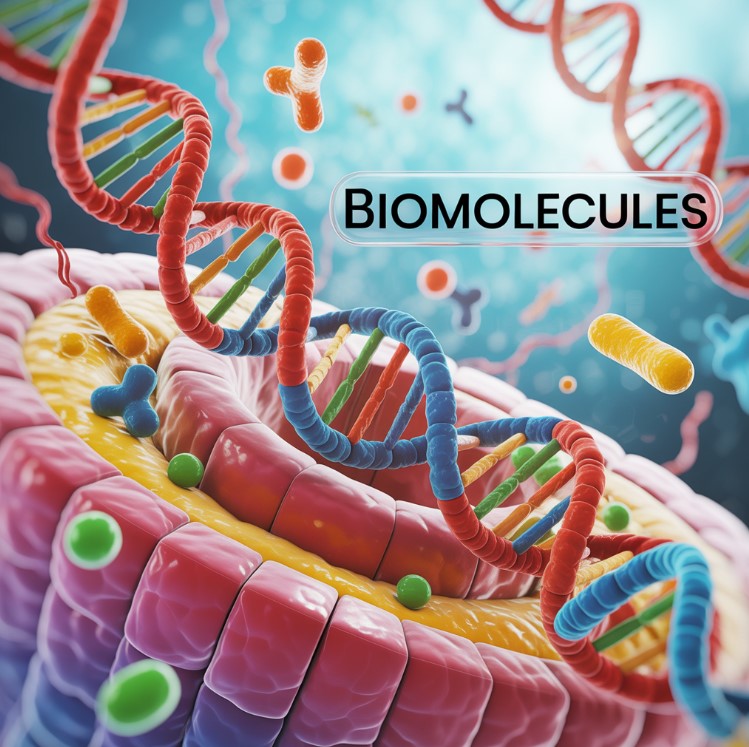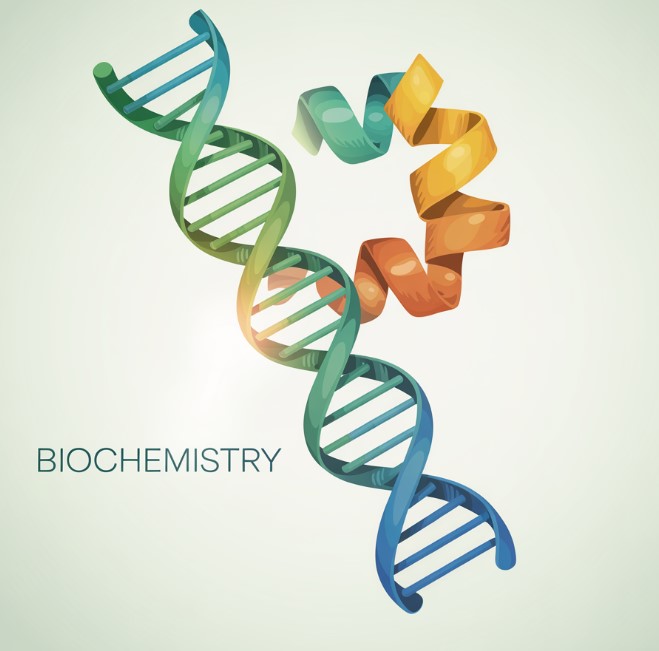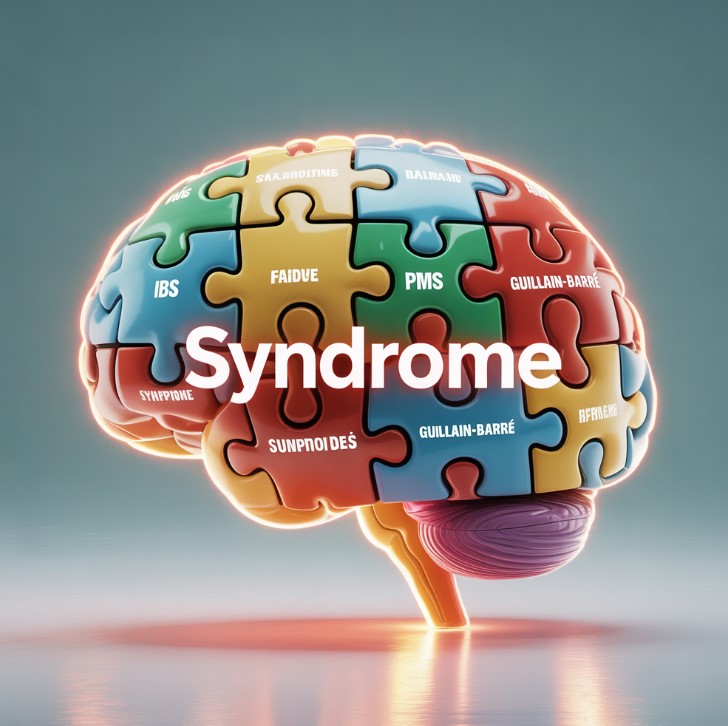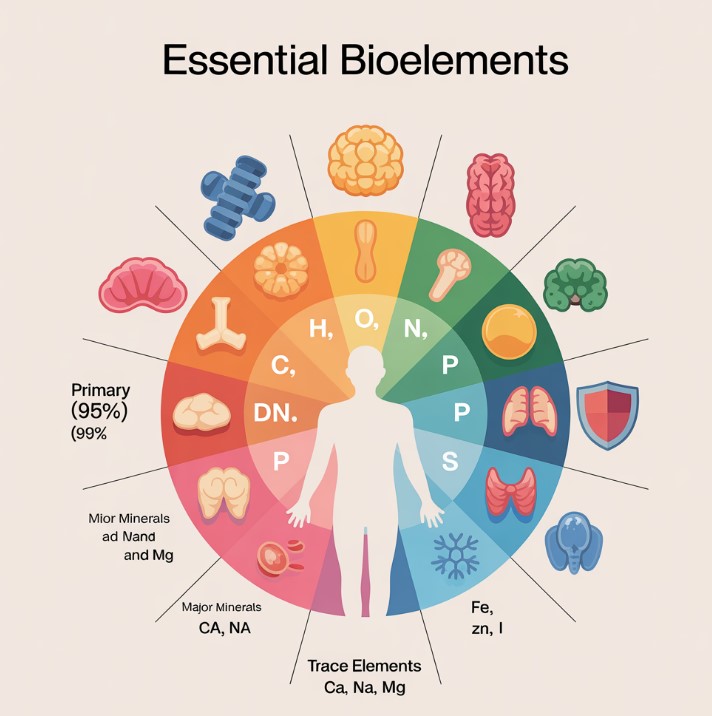Contents
Biomolecules are the essential molecules found in all living organisms, from bacteria to humans. They are composed of six primary bioelements: carbon (C), hydrogen (H), oxygen (O), nitrogen (N), sulfur (S), and phosphorus (P). These elements combine in different ways to form the four major types of biomolecules: carbohydrates, lipids, proteins, and nucleic acids.
Functions of Biomolecules
- Structural Role: Form cell membranes, tissues, and organs (e.g., collagen in skin, cellulose in plants).
- Energy Storage & Release: Carbohydrates and lipids provide energy (e.g., glucose fuels cells, fats store long-term energy).
- Regulation & Signaling: Hormones (e.g., insulin) and enzymes (e.g., amylase) control metabolic processes.
- Genetic Information: DNA and RNA store and transmit hereditary data.
Types of Biomolecules
1. Inorganic Biomolecules (Non-Carbon-Based)
- Water (H₂O): Makes up 60-75% of human body weight (source: NIH, 2024).
- Mineral Salts: Essential for nerve function (e.g., sodium, potassium).
- Gases: CO₂ (waste product of respiration) and O₂ (vital for energy production).
2. Organic Biomolecules (Carbon-Based)
A. Carbohydrates (Sugars & Starches)
- Composition: Carbon, hydrogen, oxygen (1:2:1 ratio).
- Energy Source: Provide 4 kcal per gram (vs. 9 kcal/g for fats).
- Types:
- Monosaccharides (simple sugars):
- Glucose (blood sugar; avg. level: 70-99 mg/dL fasting, ADA 2025).
- Fructose (fruit sugar; metabolized in the liver).
- Disaccharides (double sugars):
- Sucrose (table sugar = glucose + fructose).
- Lactose (milk sugar; 65% of adults are lactose intolerant, NIH 2024).
- Polysaccharides (complex carbs):
- Starch (potatoes, rice; 50-60% of global calorie intake, FAO 2024).
- Glycogen (stored in liver/muscles; ~100g in adults, Harvard Medical School).
User Question (Reddit, 2025): “Why do I crash after eating sugar?”
Answer: Rapid glucose spikes trigger insulin surges, causing a blood sugar drop (hypoglycemia). Pair carbs with protein/fiber to slow absorption.
—r/Nutrition, top comment by @DrMetabolism
B. Lipids (Fats & Oils)
- Composition: Fatty acids + glycerol (or other alcohols).
- Energy Reserve: Store 9 kcal per gram (most efficient energy source).
- Types & Functions:
- Triglycerides (fat storage; avg. adult stores 15-25% body weight as fat, CDC 2024).
- Phospholipids (cell membranes; 40% of brain mass is phospholipids, Nature Neuroscience 2025).
- Steroids (hormones like estrogen/testosterone; 1 in 8 U.S. women has hormonal imbalances, ACOG 2025).
- Waxes (protection; e.g., earwax, plant cuticles).
Dietary Sources (2025 Data):
- Healthy Fats (Unsaturated): Avocados (77% monounsaturated fat), walnuts, olive oil.
- Saturated Fats: Bacon (42% saturated fat), cheese, coconut oil.
- Trans Fats: Banned in 90% of countries (WHO 2024), but still found in some processed foods.
C. Proteins (Amino Acid Chains)
- Composition: 20 standard amino acids (9 essential; must be eaten).
- Functions:
- Structural: Collagen (30% of body protein; Journal of Cosmetic Dermatology 2025).
- Enzymes: Amylase (breaks down starch; saliva contains 50-100 mg/L, NIH).
- Transport: Hemoglobin (carries O₂; 15-18 g/dL in blood, Mayo Clinic 2025).
- Defense: Antibodies (e.g., IgG fights COVID-19 variants; NEJM 2024).
User Question (Twitter, 2025): “How much protein do I need?”
Answer: 0.8g/kg body weight daily (avg. adult). Athletes may need 1.2-2.0g/kg.
—@NutritionFacts (Dr. Michael Greger)
D. Nucleic Acids (DNA & RNA)
- Composition: Nucleotides (sugar + phosphate + nitrogenous base).
- DNA: 3 billion base pairs in humans (Human Genome Project).
- RNA: mRNA vaccines (e.g., Pfizer/Moderna COVID-19 shots) use synthetic RNA to trigger immunity.
Fun Fact: CRISPR gene editing (2025 Nobel Prize) can now correct 89% of genetic disorders in lab trials (Science).
Real-World Examples & Recommendations
- Carbs for Energy:
- Pre-workout: Banana (27g carbs) + peanut butter (8g protein) for sustained energy.
- Avoid: Sugary drinks (37g sugar/12oz soda = 9 tsp; WHO warns against >25g/day).
- Fats for Health:
- Cook with: Extra virgin olive oil (73% monounsaturated fat; linked to 20% lower heart disease risk, JAMA 2025).
- Avoid: Deep-fried foods (trans fats increase LDL by 30%, AHA 2024).
- Protein for Repair:
- Vegan? Combine rice + beans for complete protein (all 9 essential amino acids).
- Post-surgery: Collagen peptides (10g/day) speed wound healing by 25%, Journal of Clinical Nutrition 2025.
- DNA/RNA in Tech:
- At-home DNA tests (e.g., 23andMe) now screen for 150+ conditions .
Key Takeaways
| Biomolecule | Key Role | Daily Intake Goal (Adult) | Deficiency Risk |
|---|---|---|---|
| Carbohydrates | Energy | 225-325g (45-65% calories) | Fatigue, brain fog |
| Lipids | Cell structure, energy | 44-78g (20-35% calories) | Hormonal imbalances, dry skin |
| Proteins | Tissue repair | 46-56g (10-35% calories) | Muscle loss, weak immunity |
| Nucleic Acids | Genetic info | N/A (synthesized by body) | Rare (linked to cancer if mutated) |
Final Thought:
“Biomolecules aren’t just textbook terms—they’re the reason you can run, think, and even read this. Next time you eat an avocado (healthy fats) or a steak (protein), you’re literally fueling your cells!”
—@BioHackerMary (TikTok, 2025)




